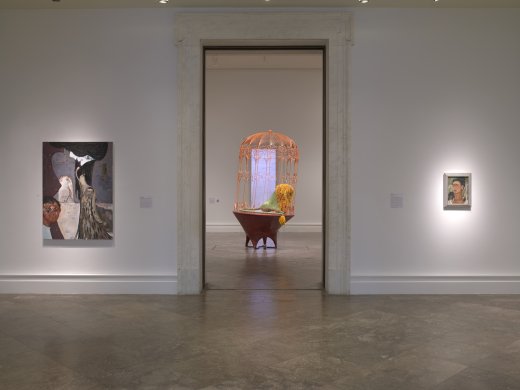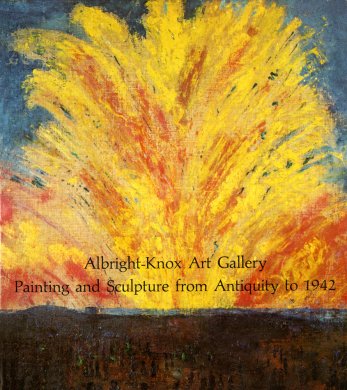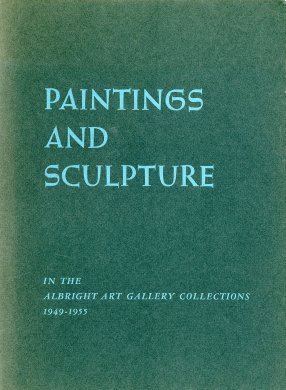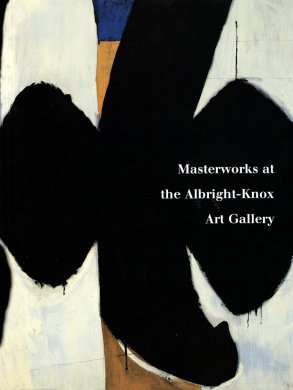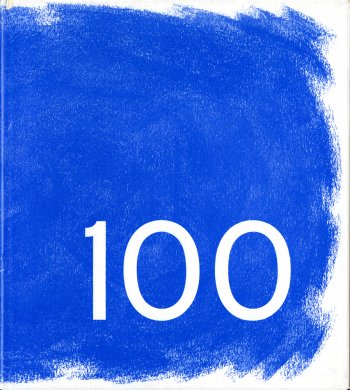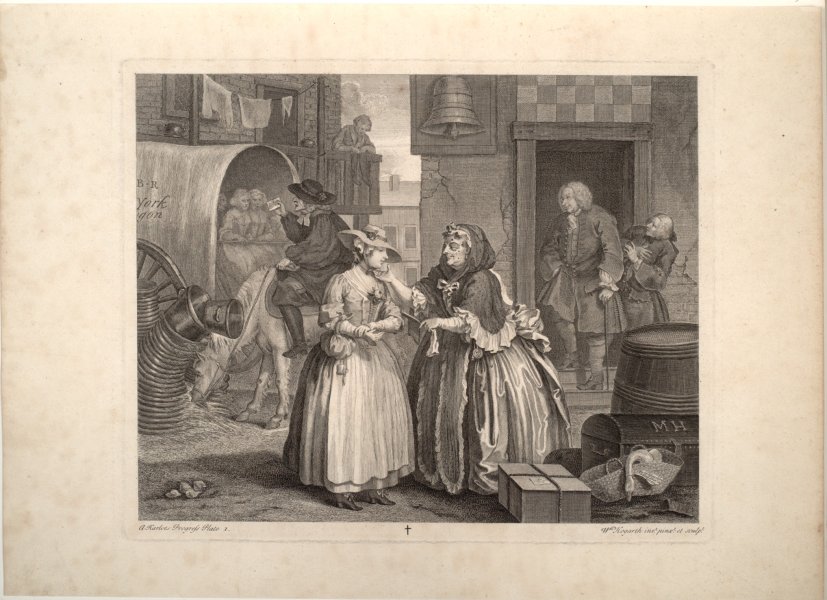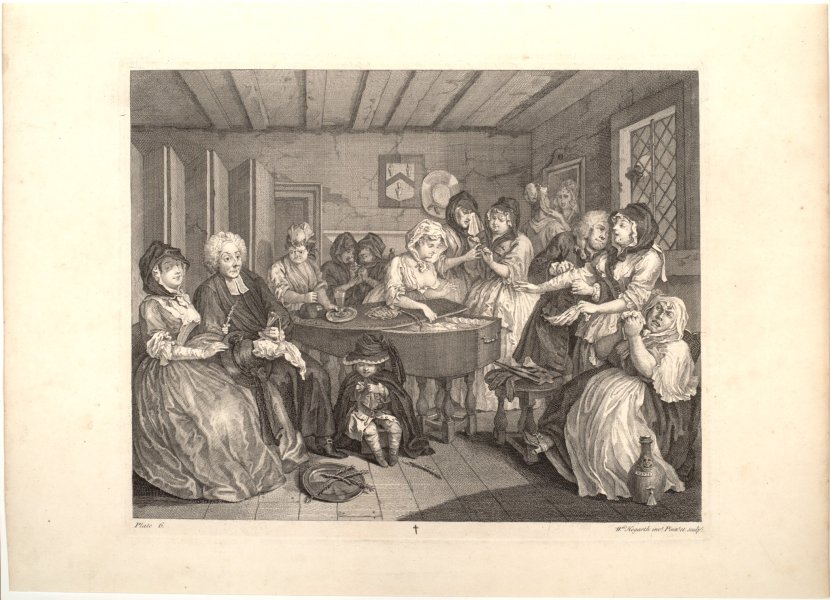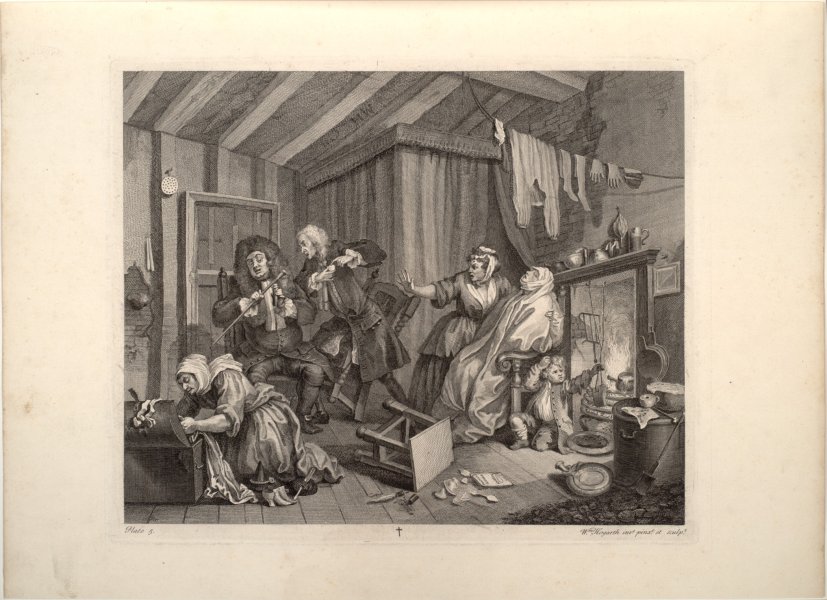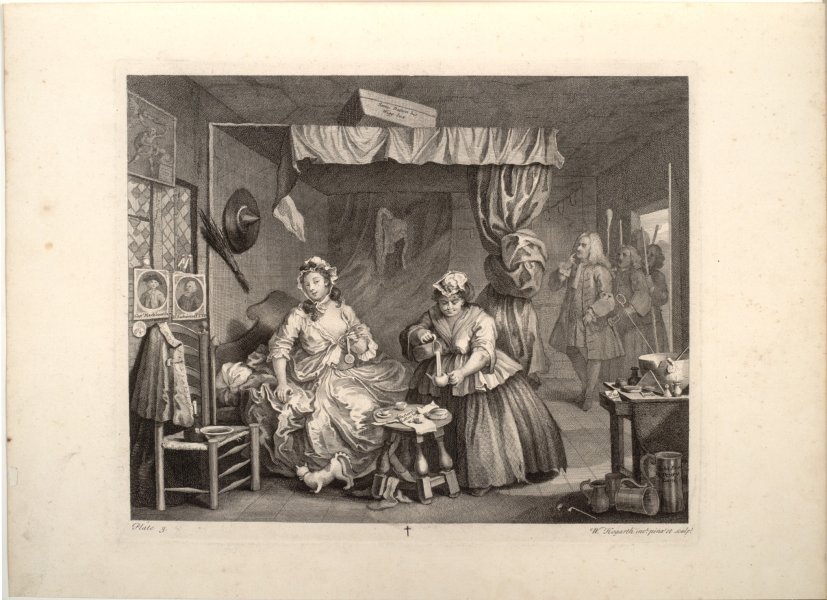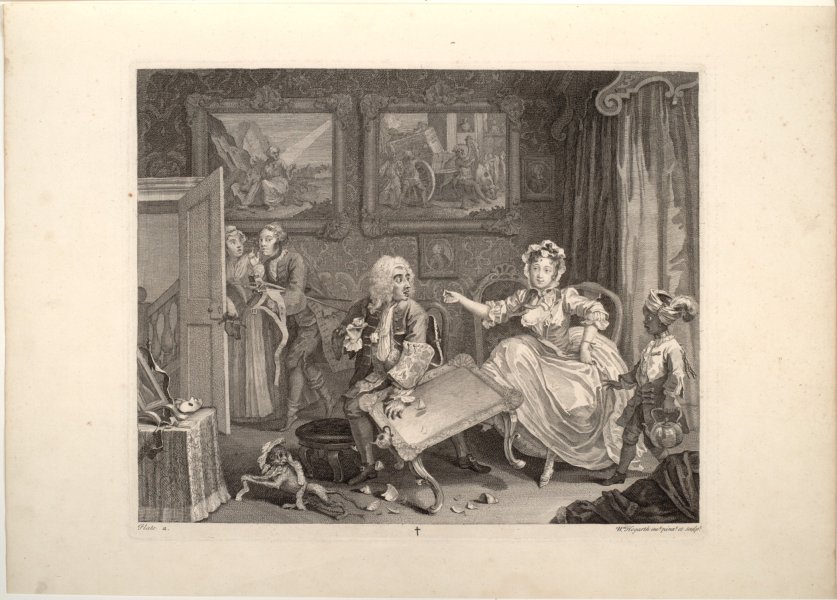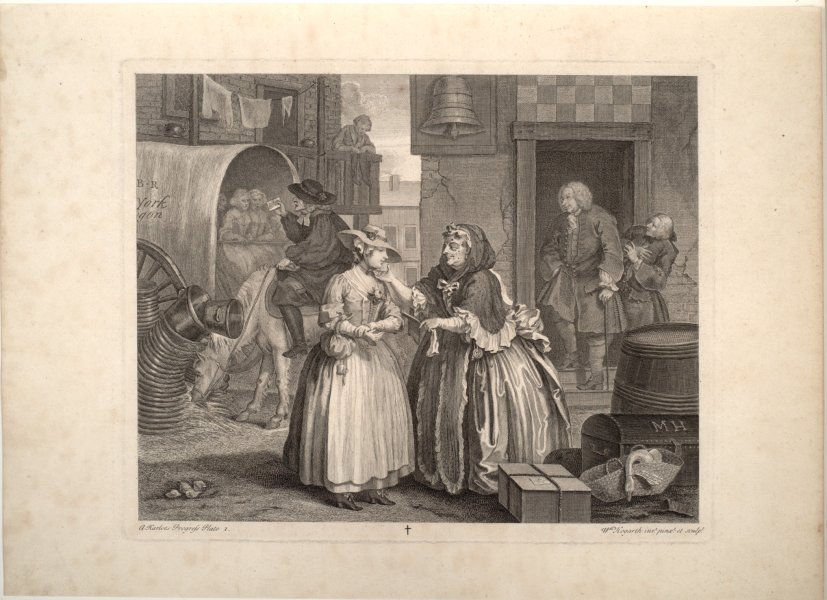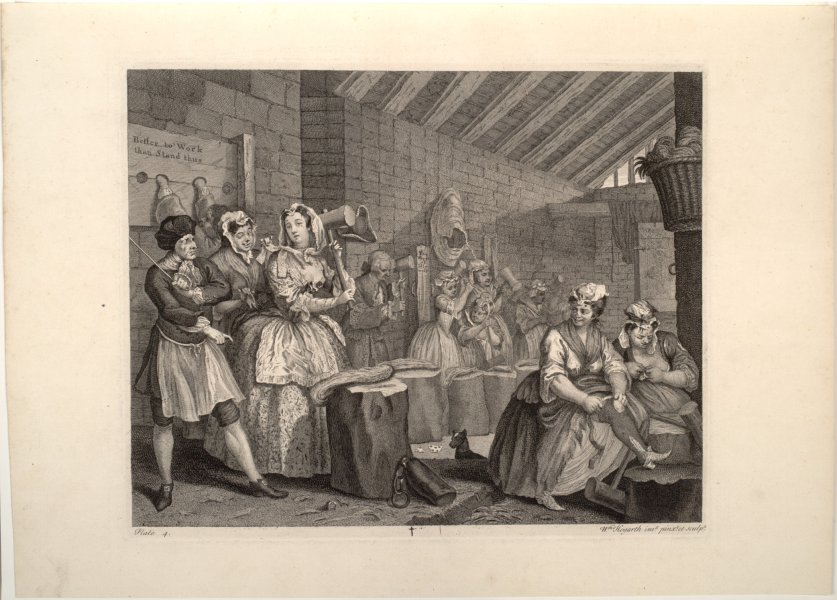William Hogarth
British, 1697-1764
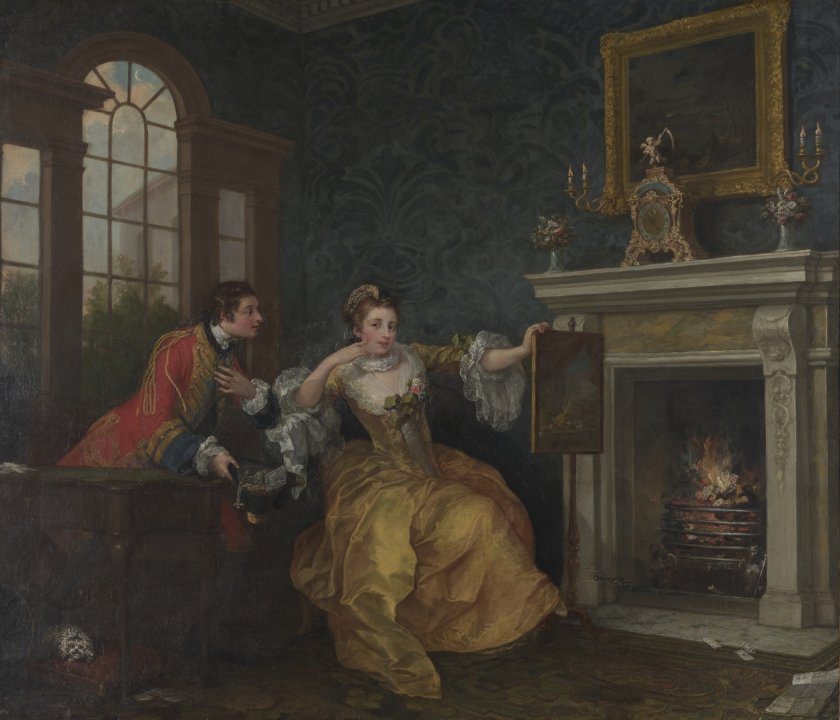
William Hogarth (British, 1697–1764). The Lady's Last Stake, 1759. Oil on canvas, 36 x 41 1/2 inches (91.4 x 105.4 cm). Collection Albright-Knox Art Gallery, Buffalo, New York; Gift of Seymour H. Knox, Jr., 1945 (1945:2.1).
The Lady's Last Stake, 1759
Artwork Details
Currently on View
Collection Highlight
Materials
oil on canvas
Measurements
support: 36 x 41 1/2 inches (91.44 x 105.41 cm); framed: 47 x 53 x 3 5/8 inches (119.38 x 134.62 x 9.21 cm)
Collection Buffalo AKG Art Museum
Credit
Gift of Seymour H. Knox, Jr., 1945
Accession ID
1945:2.1
During his lifetime, William Hogarth painted a number of satirical portraits in which he attacked folly and vice, including extravagance, drunkenness, and gambling. Hogarth was a theater enthusiast and thought of his paintings in dramatic as opposed to pictorial terms. The Lady’s Last Stake was inspired by a comedy of the same name by British playwright Colley Cibber (1671–1757), in which a married aristocratic woman gambles away her fortune to an army officer. The soldier then proposes that the two play one more game and, if she wins, she will regain her fortune. Should she lose, she will still have her goods returned, but she will also be obliged to take him as her lover. Yet, the crux of this image is not the couple’s interaction, her considerable loss, or his tactless offer. Instead it is the small, white dog perched on a pillow beneath the table. Traditionally in painting of this period, dogs are a symbol of fidelity, and, here, the dog is out of sight as the woman ponders the soldier’s terms.
